Heat Pack - Supersaturation
SED 695B; Fall 2005
Overview: Supersaturation can occur when a saturated solution is cooled below the saturation temperature. If there is no locus where precipitation can start, the solute remains in solution. This principle is used in "instant heat" packs such as the one in this kit. The solution is normally left in a supersaturated state until the pack is needed. When a metal disk is snapped, the solution is shocked and the solute rapidly crystallizes out of solution. The crystal is a lower energy state than the solution, so heat is produced while the crystallization is occurring.
The pack is "recharged" by raising it to a temperature above that at which the solution is saturated. This is easily done by placing it in boiling water. Once the solute is dissolved the pack can be removed and cooled
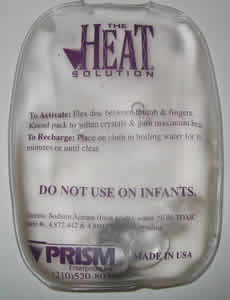
Topics addressed:
- Supersatuation
- Crystallization
- Energy Conservation
California Standard for Chemistry:
Chemical Thermodynamics
7. Energy is exchanged or transformed in all chemical reactions and physical changes of matter. As a basis for understanding this concept:
a.
Students know how to describe temperature and heat flow in terms of the motion of molecules (or atoms). b.
Students know chemical processes can either release (exothermic) or absorb (endothermic) thermal energy. c.
Students know energy is released when a material condenses or freezes and absorbed when a material evaporates or melts.
Procedure:
Please see illustrated procedure below
Questions:
- What is the temperature achieved by a heat pack when it crystallizes?
- How long does it maintain this temperature?

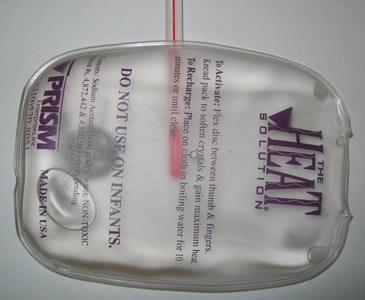

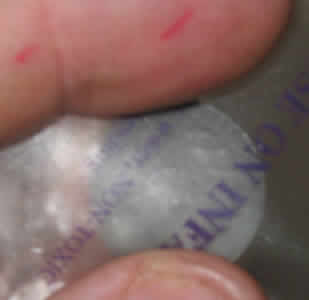
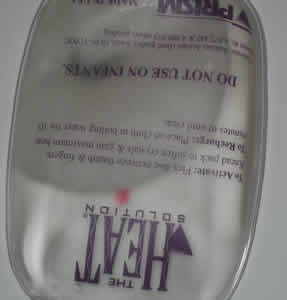
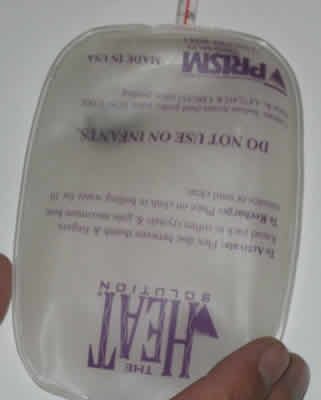
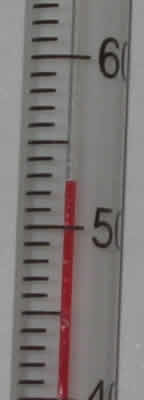
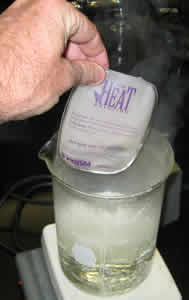
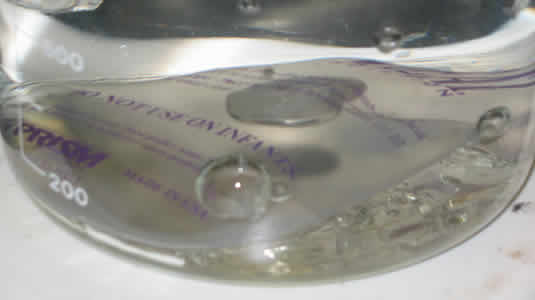
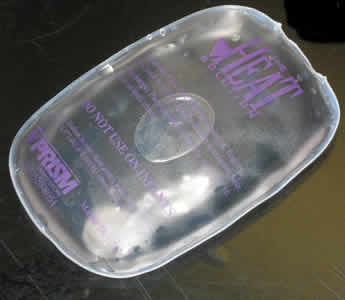
References & Links:
An excellent science fair project on this topic.
A source for these heat packs at $5.00 each.
A science supplier that has these packs at $10.00 each.
The How Stuff Works page on this topic.
MSDS for Sodium Acetate